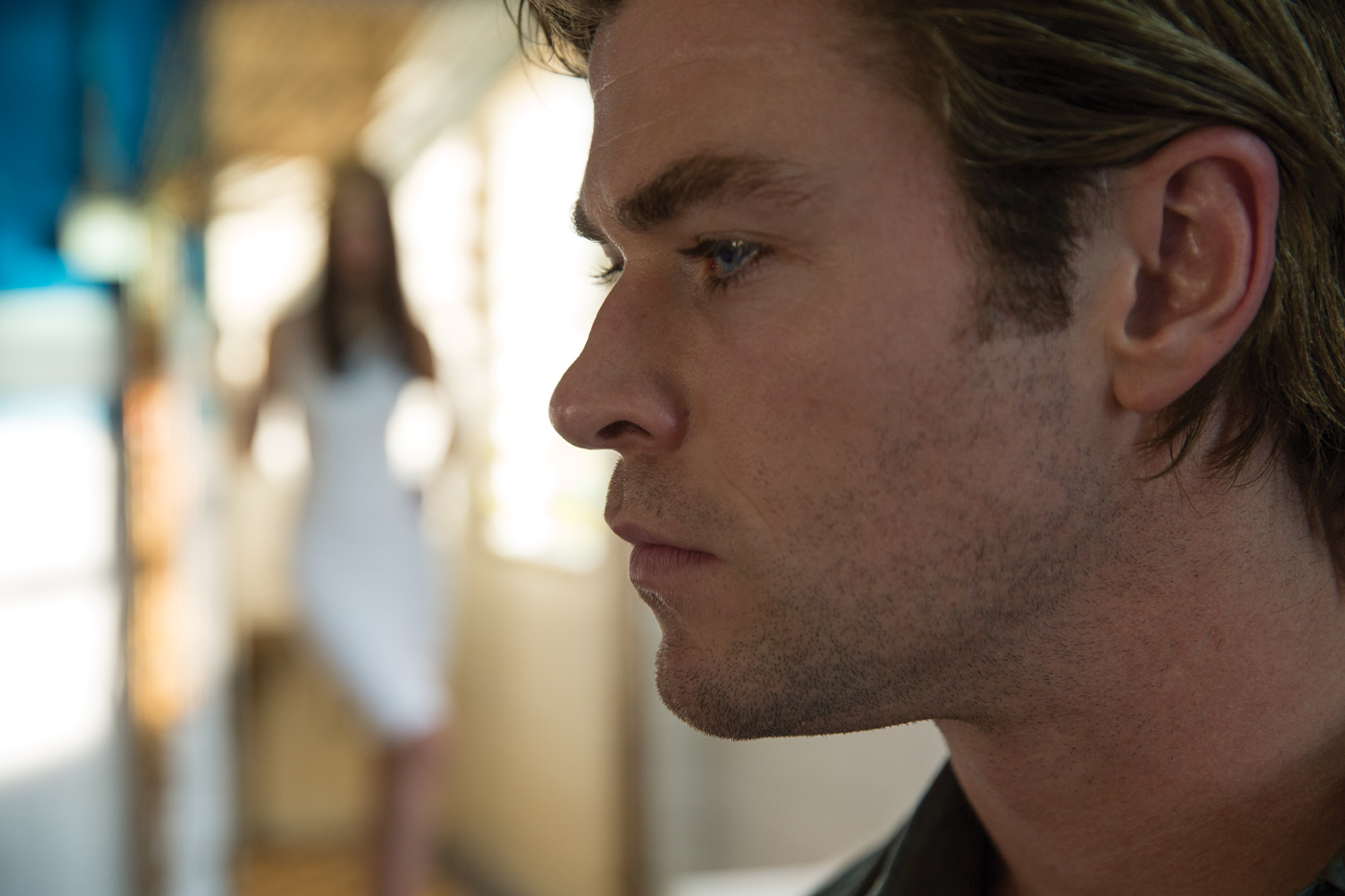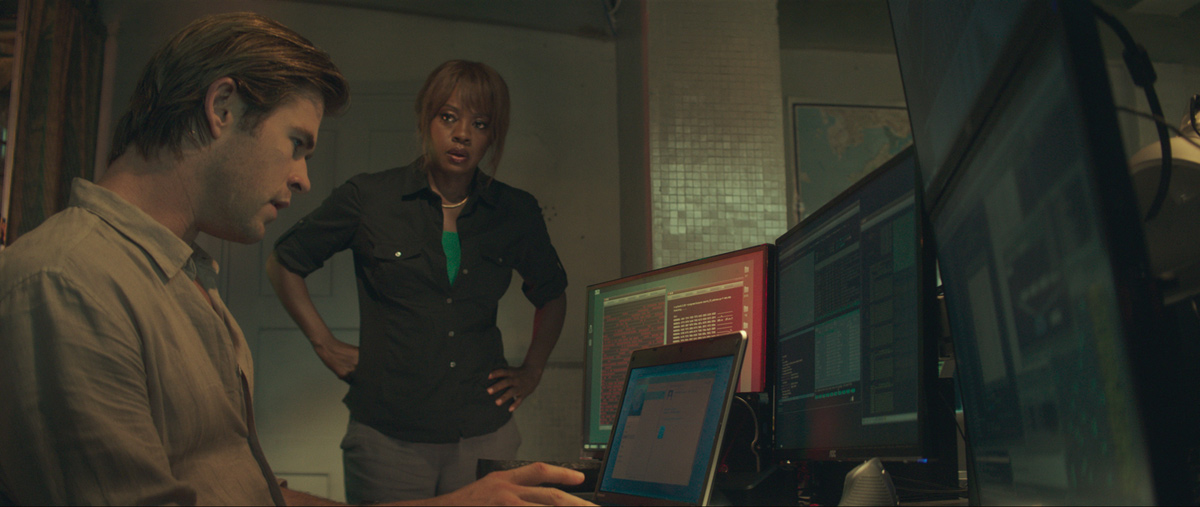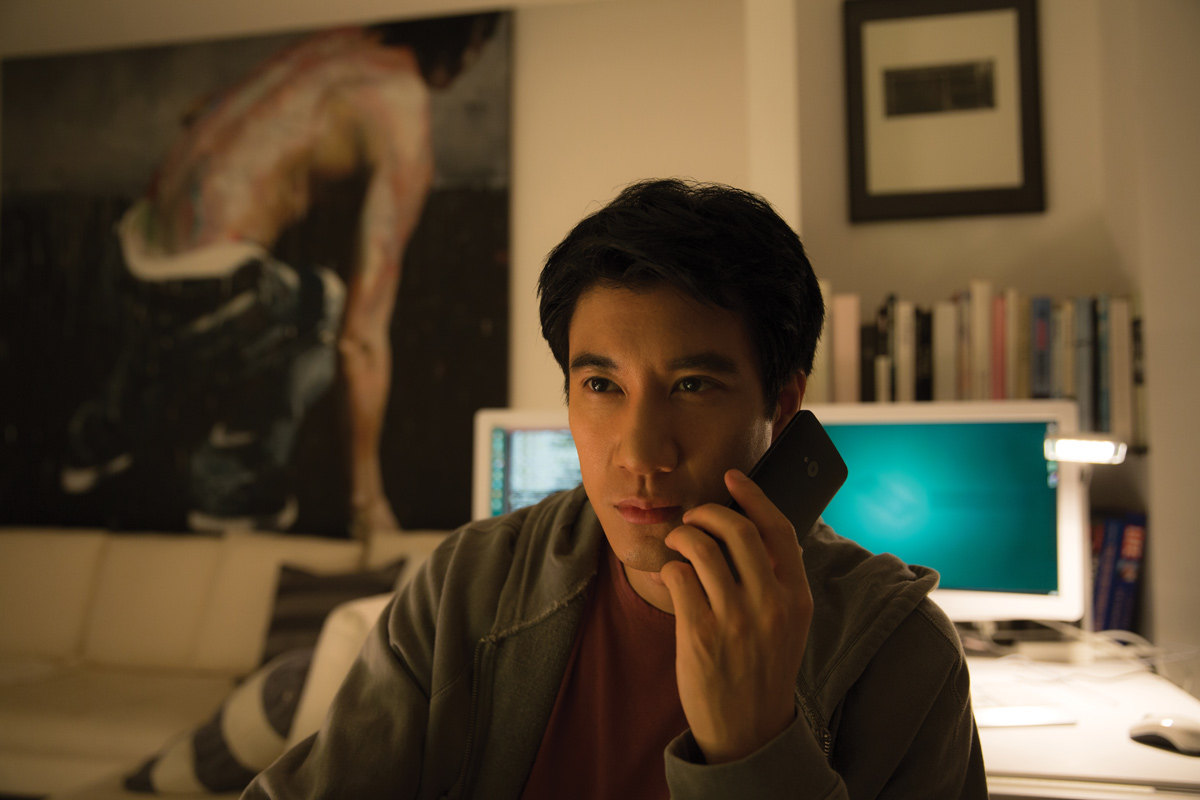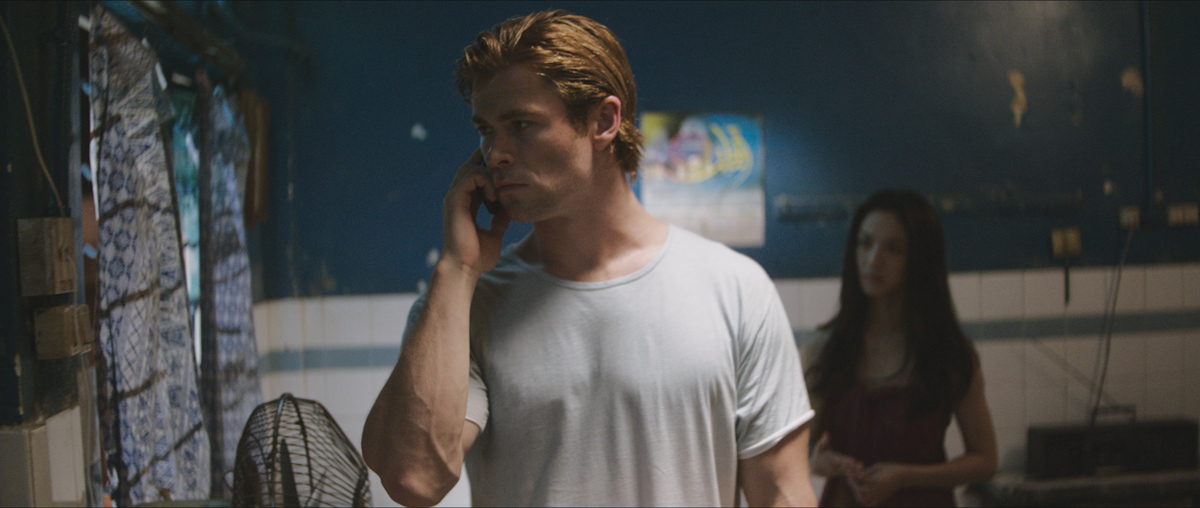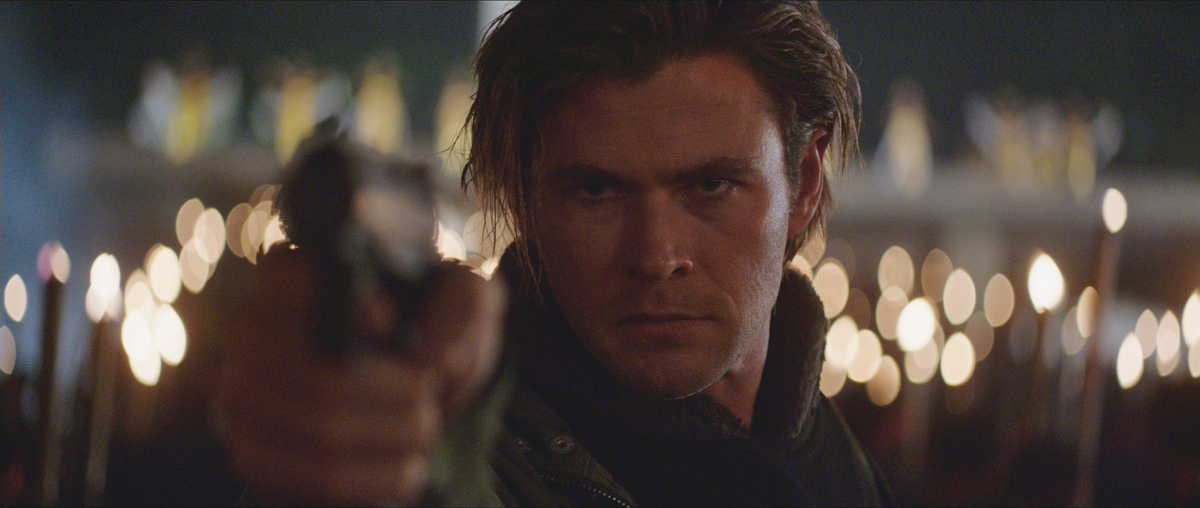Stuart Dryburgh, ASC, helps navigate a dark cyber underworld in Michael Mann’s new techno thriller, Blackhat
In the byzantine digital world of computer programming, there are “white hats” and “black hats”: the former, security experts trying to prevent the latter, malicious hackers, from breaking into businesses, banks and anything vulnerable to a cyber invasion. The subject came to filmmaker Michael Mann after the June 2010 Stuxnet computer worm destroyed one-fifth of Iran’s nuclear centrifuges. The viral attack spread on computers running Microsoft Windows, with a specific target of large-scale industrial systems using Siemens software. Subsequent statements by U.S. and Israeli arms officials blurred the line between white and black hats, indicating the Stuxnet virus was politically motivated. After intensive research, Mann decided to meld the notion of a global computer worm with his passionate desire to shoot a crime film in Asia.
Blackhat’s story follows a furloughed convict (Thor’s Chris Hemsworth) and his American and Chinese partners as they hunt a high-level cybercrime network from Chicago to Los Angeles to Hong Kong to Jakarta. Cinematically, the key challenge was, as Operator and co-2nd Unit DP John Grillo says, “to show this vast underbelly and interconnectedness of the Web in visual terms. The analog world as it relates to the digital universe.”
“Michael didn’t want [cinematographer] Stuart [Dryburgh, ASC], [co-2nd Unit DP and Operator] Duane Manwiller, SOC, and [co-2nd Unit DP and Operator] John Grillo to necessarily shoot establishing shots because of the pace of the story, which jumped rapidly from city to city,” explains production designer Guy H. Dyas. “Our first discussions were about a way for the audience to recognize what country they were in using a specific color palette for the architecture and light sources.”
“Hong Kong would be depicted with red and yellow neon in the old town and cool cyan blues and orange sodium in the business district,” explains Dryburgh. “Jakarta was rich purples and solid greens. In fact, one characteristic of Jakarta is the way colors cluster together. Red wall with red motorbike and man in red shirt; green-painted food cart pushed by a man in a green shirt passing an apple-green car under a green tree.”
![[Co-2nd Unit DP and Operator] Duane Manwiller, SOC with ALEXA M and compact periscope system in downtown L.A. location](https://www.icgmagazine.com/web/wp-content/uploads/2015/01/blackhat4.jpg)
In fact, the Blackhat team did multiple comparison tests, trying to find that elusive perfect small camera. “We side-by-side-tested the Red Scarlet-X, the Canon C500 and the GoPro, with the Alexa as the gold standard for comparison,” Dryburgh reports, “and elected to use the Canon 5D and 7D as our ‘throw around’ cameras.
“We had liked the look of the Canon 5Ds [used on the Luck TV pilot],” he continues; “however, when we got to the shoot, it became apparent that the 5D didn’t look so great alongside the Alexa, at least for motion-picture screens, lacking file size and resolution, compressed color space, and with the characteristic shutter distortion that occurs with rapid cross-frame movement. We elected to replace [the Canons] with the Red Scarlet and our existing Canon lenses, knowing we could grade the 4K Raw files to match the Alexa with greater success.”
Mann pushed the tech envelope to put the story together. Assistant Craig Grossmueller, who prepped and keyed on the splinter/second unit in Hong Kong and Jakarta, and then joined the main unit to assist operator Roberto De Angelis, says Blackhat was one of the first shows to use Alexas XT’s with on-board Codex XR recorders. “[Main-unit 1st ACs] Jimmy Jensen and E.J. Misisco had the daunting task of preparing several different camera and lens systems, to shoot in four countries,” Grossmueller states.
Misisco describes working with Mann as “never easy,” although always rewarding. “[Mann’s] commitment to his projects is unparalleled,” the 1st AC observes. One of the hardest shots I have ever attempted occurred when Duane and I suggested racking from an actor’s eyes to a muzzle flash right at minimum focus and then back to the actor’s eyes repeatedly during a very intense fire fight scene. Pulling it off required Duane, myself, and the actor being in perfect sync. While you’re pushed out of your comfort zone, being part of [Mann’s] crew is extremely validating.”
De Angelis, who joined the crew in Hong Kong before heading to Jakarta and then back to Kuala Lumpur, Malaysia, says the director likes to try out a new technique and new piece of equipment on every show. For Blackhat it was the P+S Technik Skater Scope [a compact periscope system] used hand held.
“Michael uses operators for what he thinks they are good for,” De Angelis explains. “Duane used the Skater Scope hand held, John [Grillo] was on the long lens shots, and I was on moving shots or action. We’re normal operators in any situation, but Michael takes the best skills he thinks we have, so in the same scene he can pick a different operator for different shots.”
“The use of the Skater Scope is a signature Mann shot,” Grillo adds. “The actors’ faces are maps to understanding emotion and motivation, and with this scope system, we are so close to them physically – within inches – that the audience can feel what they are thinking.”
Grillo recounts a unique second-unit sequence that involved a car exploding in the middle of Hong Kong’s financial district. “We were not permitted to blow up a vehicle in that location,” he describes, “so we rehearsed the scene with the actors [in another part of Hong Kong]. We had 17 cameras, including a special high-speed camera crew from Los Angeles, and worked out the blocking with the help of [VFX Supervisor] John Nelson. We marked all the cameras rigorously, moved them around, marked them again, and wrapped for the night.”
A week later, Grillo and Nelson traveled to a vacant parking lot in Jakarta, and with a single vehicle in the middle, spent the night positioning the 17 cameras based on the earlier set-up. “We lit the car, loaded it up with explosives and blew it up, twice, finished at dawn, drove back four hours to the airport and flew back to Hong Kong,” Grillo shares. “A few weeks later, we finally shot the scene in Hong Kong with the remains of the car we blew up in Jakarta that were shipped back to us.”
The scene as shot used nine cameras – four RED Epics, two Phantoms, two Canon 5Ds and one Canon C300. “On the day of the shoot, [Mann] decided to change four positions,” Grossmueller recalls. “One of which was on a bridge across the street from the car in Hong Kong. When we were shooting in Jakarta we were in an open parking lot with no high ground. The local grips built us a scaffold 130 feet in the air, where we could duplicate the position for the Hong Kong section. Just before the shot, John Grillo sent still frames of the new positions to Michael from his phone for final approval. After packing up the cameras and car debris, we met up with the main unit in Hong Kong to shoot the scene at Hang Seng Bank in Quarry Bay. While this may seem like an unconventional approach, it is uniquely Michael Mann.”
![[Co-2nd Unit DP and Operator] John Grillo with handheld RED Scarlet-X shooting parts of Blackhat’s massive finale in Jakarta, Indonesia](https://www.icgmagazine.com/web/wp-content/uploads/2015/01/blackhat5.jpg)
“Michael relies on his DITs for every shot, to ensure that the media is exposed and encoded in a way that will seamlessly flow into the picture,” Gabrio explains. “At one point, in Hong Kong, our second unit rolled into our first unit and I worked with their DIT, Jeff Tomcho, to manage all the color information for the assortment of bodies that we had those nights. Through the course of the show, we had enough camera bodies to use up each letter of the alphabet, with, I think, a few doubled-up letters.”
“For Michael and Stuart, having mobility, both in camera size and DITs, was of great importance,” Gabrio adds. “Every shot was designed based on which of our many camera bodies would fit in a location, and there was no way for my setup to be far away.”
EC3’s dailies workflow began at Company 3, in Santa Monica, CA, and then, as the production moved, was executed in fully outfitted, four-walled dailies-processing setups in Hong Kong and Kuala Lumpur. The DITs would hand-off drives containing the day’s ARRIRAW Log C, .r3d, and drives with material from the GoPro, RED Epic, Phantom and Canon cameras for delivery to EC3.
Mann wanted the material colored in P3 color space, which is used for theatrical projection, rather than the HD color space of .rec 709, commonly used for dailies. Colorist Dave Lee worked on Resolve (for Mac), creating a dailies grade of everything working in P3 and grading to a monitor capable of 10-bit P3 display. “Even the onset monitors were all calibrated to display P3 color space,” Dryburgh reflects. The EC3 support team then created the various deliverables, including LTO backup, and DVDs to send to the set for Mann, Dryburgh and everyone else who needed them. EC3 also used Aspera to send Avid DNX files (also in P3) to the editorial team in Los Angeles.
“This was a very elaborate project,” explains EC3’s production manager Marc Ross. “We worked off an 80-terabyte SAN. Material came in many formats and at different frame rates, and had to be colored and turned around quickly. Fortunately, we have the wherewithal to four-wall a digital lab in any city in the world.”
Company 3’s founder, Stefan Sonnenfeld (who has colored most of Michael Mann’s digitally finished features), worked mostly with Mann in the room. (Dryburgh was on another project, but most of the film’s looks had already been built on-set with DIT Gabrio, and refined through EC3, with colorist Dave Lee.) Sonnenfeld says that “even when we made some changes, it was great to have so much of Stuart’s ideas already there to work with.”
Mann’s preference for mixing formats without trying to achieve a singular look is, from the veteran colorist’s perspective, like employing multiple film stocks in the same story. “Michael likes to have his cinematographer work with different cameras because he wants different looks,” Sonnefeld adds. “He’s more concerned with the overall energy of he film; he’s not so precious about matching everything.
“I think [Mann’s approach] can be much more powerful,” he continues. “It depends on the piece, of course, but sometimes when shots are too close and consistent, it can get a little sterile and in a way feel less realistic. Sometimes images go together powerfully in the dramatic context of a scene or a whole movie but don’t necessarily match scientifically. Michael doesn’t just say, ‘Brighten this scene.’ He’ll say, ‘The character’s really angry at this point, so how can we help convey this with contrast and color?’ That’s why it’s always so interesting and enjoyable working with him.”
One such sequence that truly sums up Mann’s intensity was the safe house in Hong Kong, for which Mann, Dryburgh and Dyas scouted more than 60 locations.
“We found this seedy massage parlor on Woo Sung Street in Hong Kong,” Dyas remembers. “The structure had been untouched since the 1940s – unsightly retrofitted interior elements and a cacophony of modern ugly. It was just down the street from a hawker’s food-bazaar location, where we were also shooting. At the right time of day, this location not only took on a mysterious quality, but you could also see this cardboard city moving – covered in rats.”
Dyas says anything could be purchased from the vendors on Woo Sung Street. “Everything from snake sandwiches to inflatable sex dolls,” he adds. “There was a bizarre narrow staircase leading up to our interior that had overlapped multi-colored advertising. Exactly the type of unexpected discovery Michael likes.”
“When we got into the space, the first thing we did was strip out the interior and make it an open plan,” he continues. “We took out the creepy private cubicles [the location was a massage parlor sitting over a Kung Fu studio], where there was limited light anyway. It transformed the space so that we could now experience the amazing world outside. In 12 days we designed, decorated, painted and refurbished. We even created an enormous 60-foot by 25-foot original Chinese ad of strange and beautiful female characters leering in through the window. Michael’s idea, of course.”
“The sign Guy created to hang on the outside of the safe house consisted of these huge Chinese ideograms in vivid red neon, which also contributed to the interior night lighting,” Dryburgh elaborates. “This was supplemented with a ‘Condor-type’ lift with a small HMI, and a ‘stolen’ light position for two 1.2-kilowatt HMIs on the roof of the public structure across the street.”
Dryburgh says that inside the location, which was large by Hong Kong standards, gaffer Bob Krattiger used “small practical lights as well as small tungsten Fresnel and LED lights, some hidden amongst the deep concrete beams of the roof, the always useful paper lanterns and often the light of the computer screens themselves.”
Blackhat’s climactic scene, which was filmed over several nights in a public square in Jakarta with thousands of extras, finally brings the anti-hero, Hathaway, face to face with his quarry. “The violent denouement takes place amid the colorful crowds of a Balinese street festival,” Dryburgh describes, “complete with giant statues of ancient gods and demons, carried by hundreds of torch-bearing men, beautiful dancers and musicians from the Balinese community in Jakarta.
“New Zealand-based gaffer Sean O’Neil organized this pre-light with a largely local crew,” he continues. “Sean utilized the biggest lifts we could find in Jakarta, and helium balloon lights rigged on wires between the tall trees on either side of the set. Everything was dialed down to a minimum so that the flaming torches would still be the dominant light source – again relying on the Alexa’s sensitivity to capture light at very low levels.”
“When Michael called, ‘Wrap,’ it was a surreal experience,” Manwiller concludes about the adrenaline-charged climax. “Not just because we shot all night long in the muggy, smoky air with a huge crew and extras, but because the local Indonesia crew and extras instantly popped out cameras everywhere and wanted to take group pictures with the crew, shake hands and express what a great experience they had. At one point, I looked over at Michael and he was fully engulfed in a crowd, like a rock star. Everyone wanted a picture – or even just to shake his hand.”
CREW LIST > Blackhat
Dir. of Photography: Stuart Dryburgh, ASC
Operators: Duane Manwiller, John Grillo, Robert De Angelis
Assistants: Jimmy Jensen, EJ Misisco, Craig Grossmueller,
Brent Egan, Autsin Alward, Tyler Emmett
Digital Imging Tech: Greg Gabrio
Digital Loader: George Billinger
by Pauline Rogers / photos by Frank Connor

